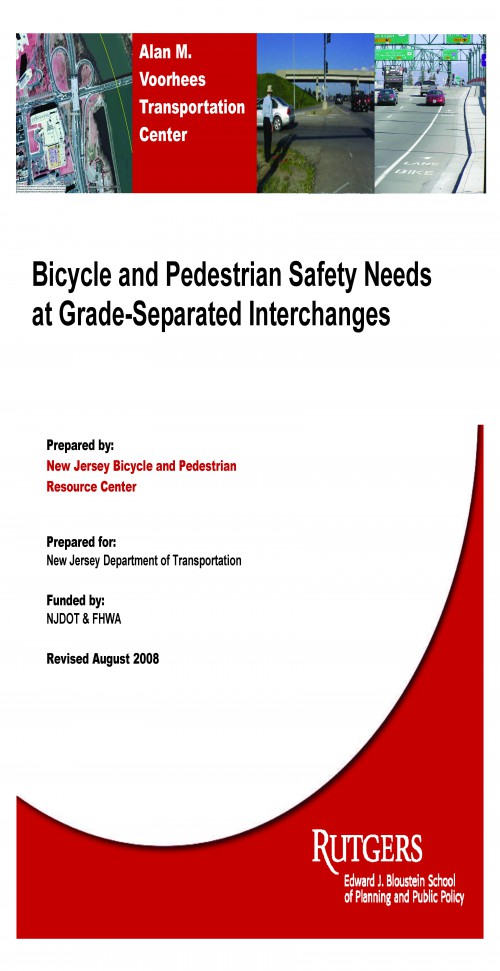Throughout New Jersey, pedestrians and bicyclists face challenges at grade-separated highway interchanges. Sidewalks, bike lanes, and shoulders frequently end where secondary roads cross over or under highways. The angle and design speed of on and offramps lead drivers to focus primarily on other motor vehicle traffic, giving insufficient attention to non-motorized users. Roadway markings, warning signs and design cues that indicate where bicyclists and pedestrians should travel, and where motorists should yield, are frequently absent.
While design guidelines for integrating bicyclists and pedestrians at at-grade highway intersections are readily available, less information is available for grade-separated interchanges. The objective of this report is to summarize common challenges to pedestrian and bicycle mobility through grade-separated interchanges and to document best practices. The Alan M. Voorhees Transportation Center at Rutgers University (VTC) conducted a literature review of published research and national, state, and regional roadway design guidelines to assess the state of practice in interchange designs that meet the needs of non-motorized users. This review was supplemented by on-site observations conducted at the interchange of Interstate 280 and Pleasant Valley Way in West Orange, New Jersey, to document typical conditions at an interchange in the state. This site was
identified by Michael Dannemiller, Senior Planner at the RBA Group, as having a mixed ramp configuration that represents a range of design alternatives.
Read full report: Bicycle and Pedestrian Safety Needs at Grade-Separated Interchanges (2008)

